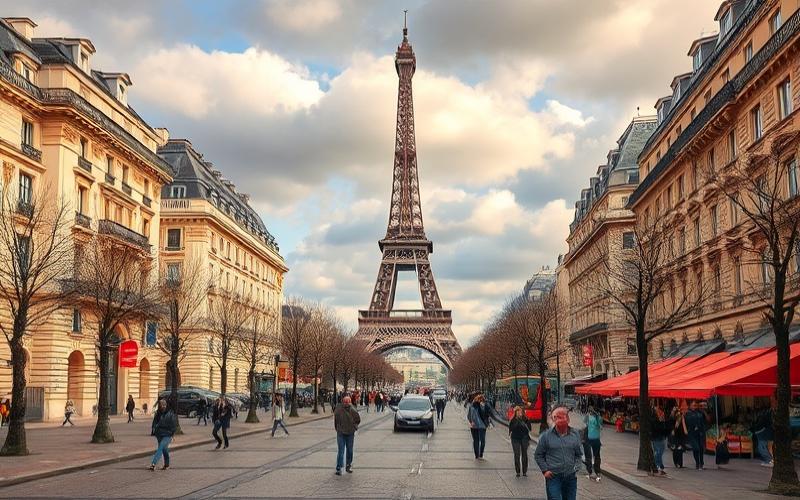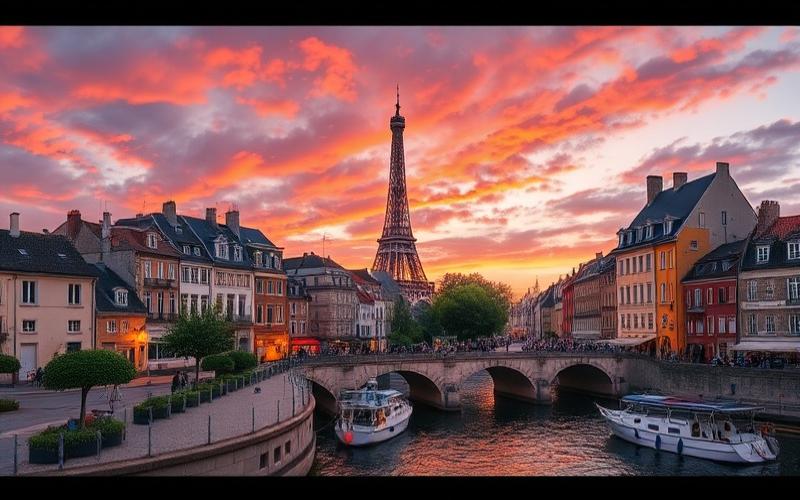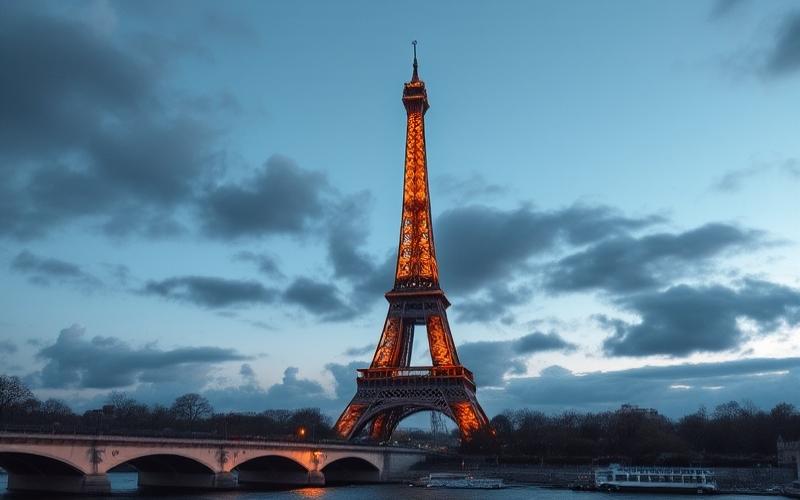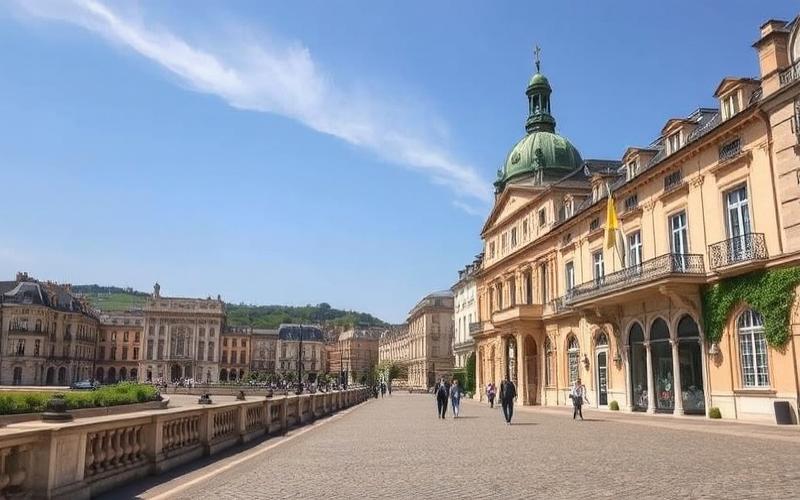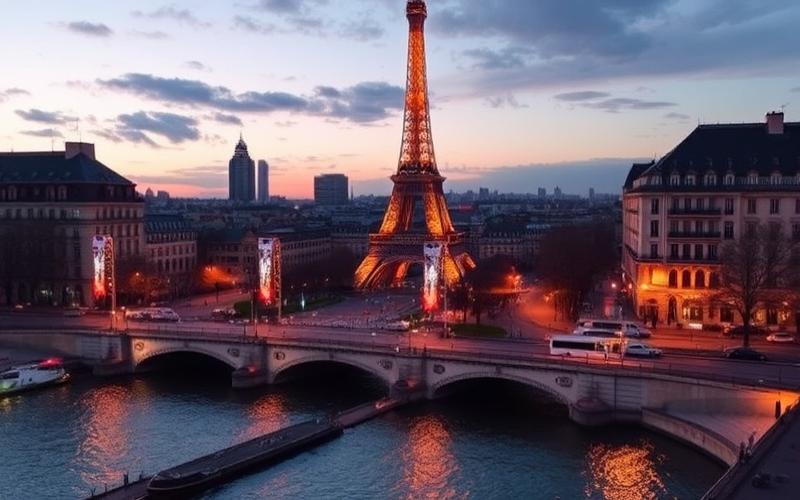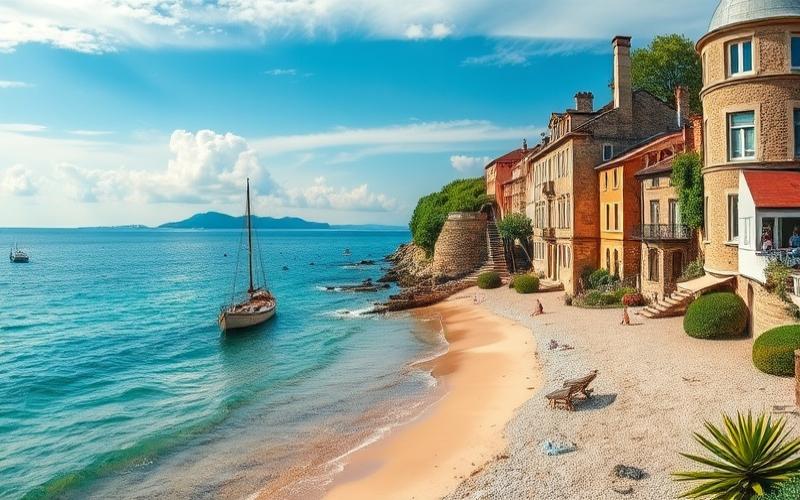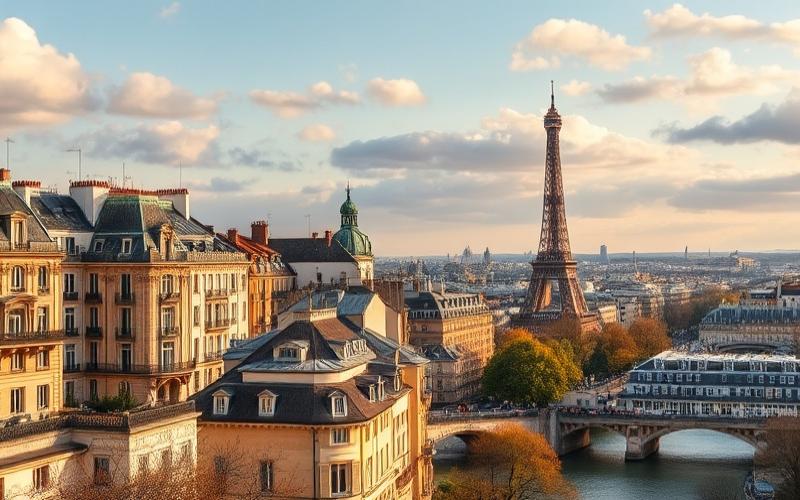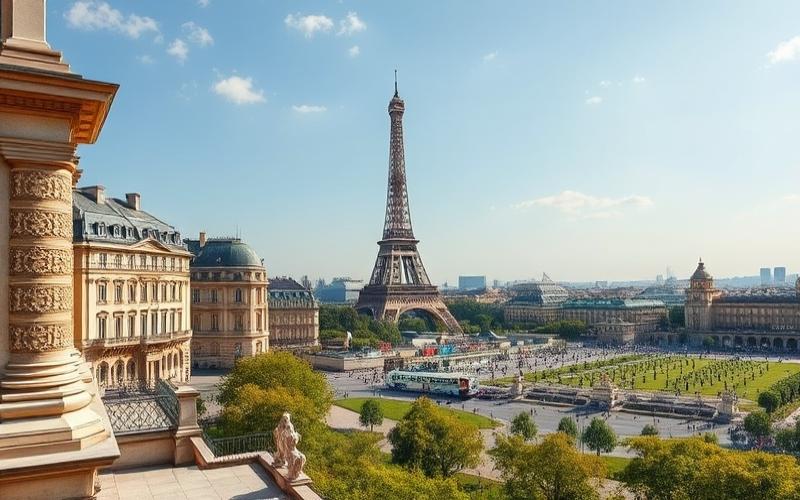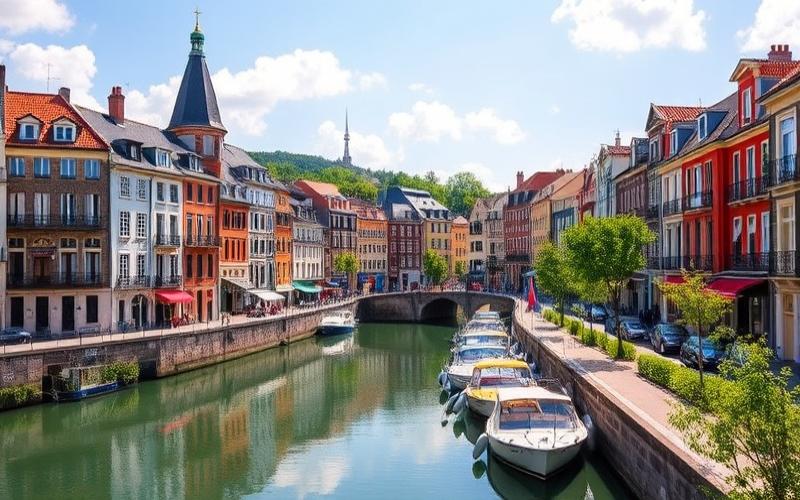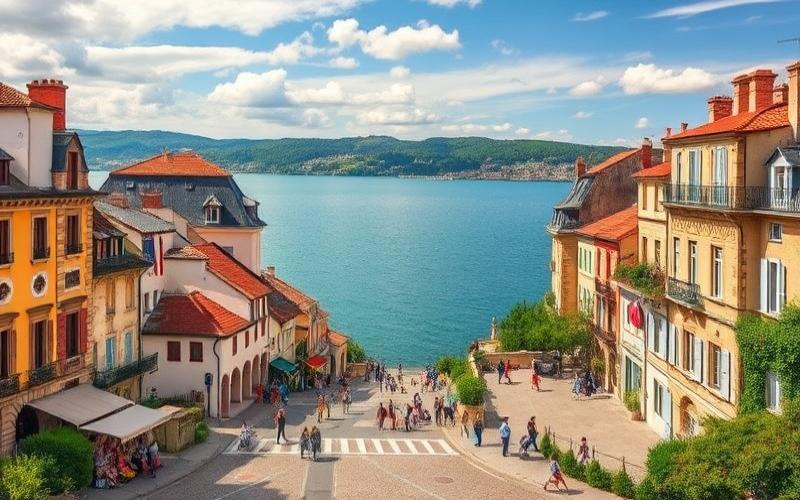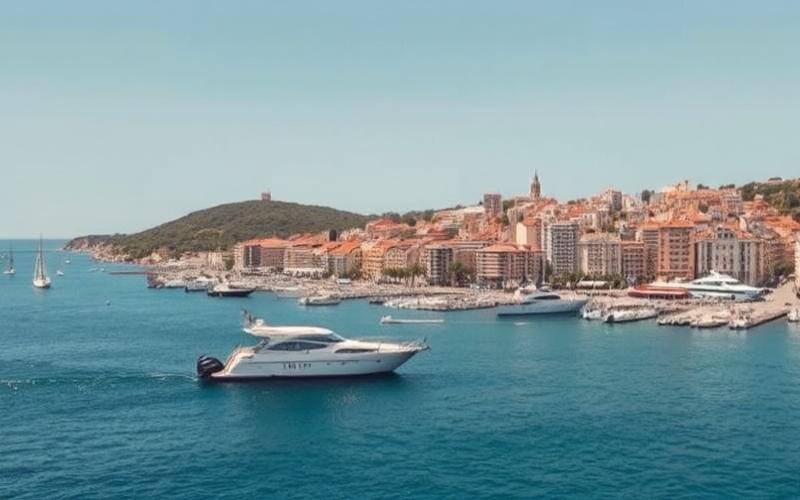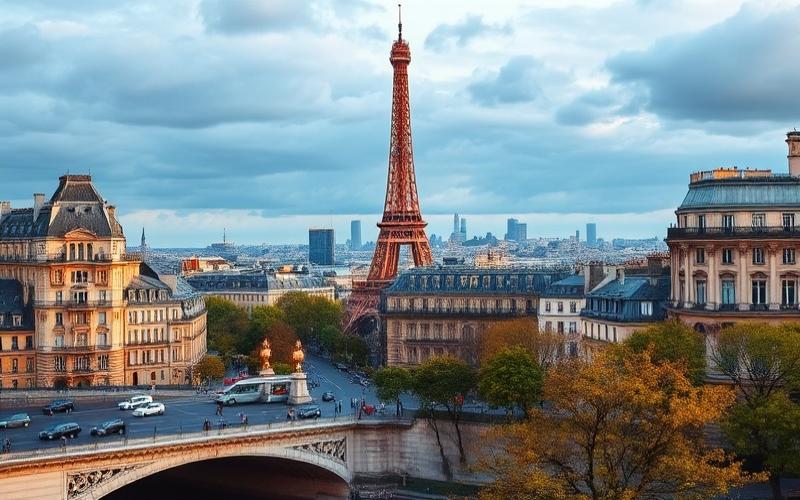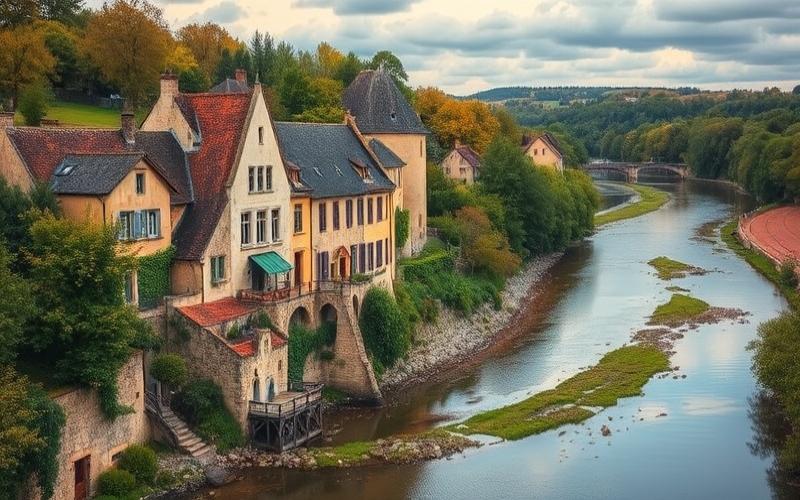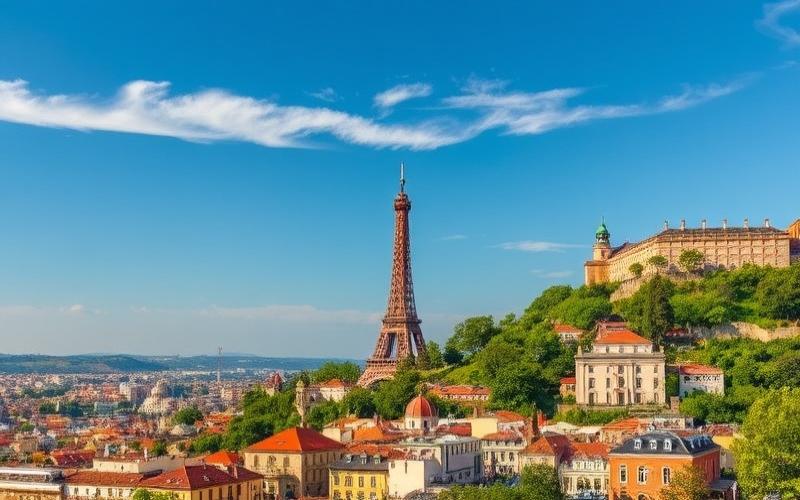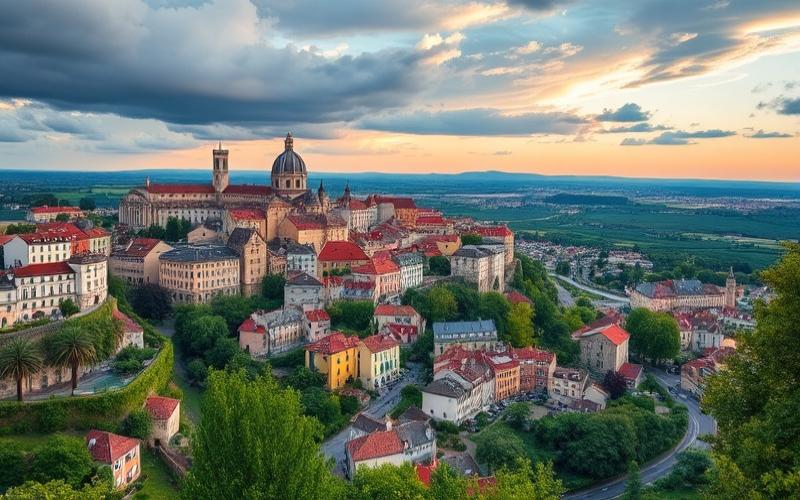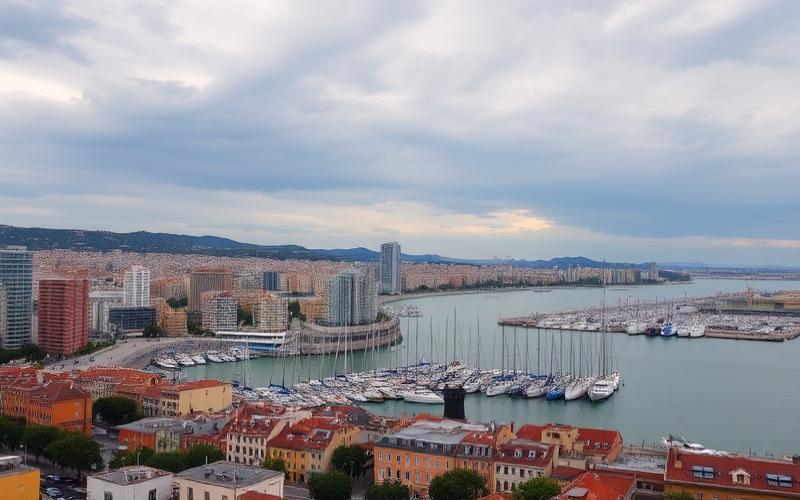
 Published on and written by Cyril Jarnias
Published on and written by Cyril Jarnias
France stands at the dawn of a true urban revolution. Ambitious and innovative projects are emerging across the country, reshaping our cities’ outlines and opening new perspectives for real estate. From the Greater Paris metropolis to provincial eco-districts and the renovation of historic centers, the French urban landscape is transforming to meet 21st-century challenges. Let’s explore together the major developments that will shape tomorrow’s France and their implications for the real estate market.
Grand Paris Express: A Revolutionary Transportation Network
At the heart of the Paris region’s transformation lies the monumental Grand Paris Express project. This new 200 km automated metro network will redraw the transportation map of Île-de-France and radically reorganize the territory.
A Colossal Project for a Future Metropolis
The Grand Paris Express includes the creation of four new metro lines (15, 16, 17, and 18) along with the extension of line 14. In total, 68 new stations will be built, effectively connecting Paris to its suburbs and linking different activity hubs. This titanic project, estimated to cost over €35 billion, aims to open up isolated areas, reduce traffic congestion, and stimulate economic development throughout the region.
Major Impact on Île-de-France Real Estate
The arrival of the Grand Paris Express will profoundly alter the map of real estate attractiveness in Île-de-France. Municipalities benefiting from new stations will see their accessibility significantly improved, which should translate into rising property prices. Cities like Saint-Denis, Villejuif, or Champigny-sur-Marne could experience a genuine real estate boom in the coming years.
Experts estimate that properties located immediately near future stations could see their value increase by 10-15% by the network’s full commissioning scheduled for 2030. This potential added value is already attracting numerous investors who anticipate the transformation of currently neglected neighborhoods into sought-after areas of the Paris metropolis.
Good to Know:
The Grand Paris Express will create new centralities in the suburbs and redraw the map of real estate attractiveness in Île-de-France. Cities served by the new network should see significant appreciation of their property stock in the coming years.
The Transformation of Medium-Sized Cities: The Example of Creil
While major metropolitan projects often capture attention, many French medium-sized cities are also undergoing significant urban transformations. The example of Creil, in the Oise department, perfectly illustrates this renewal dynamic affecting numerous intermediate-sized urban areas.
An Ambitious Urban Renewal Program
The city of Creil has launched a comprehensive renewal program called “Action Cœur de Ville,” with a budget of €201 million through 2030. This project plans for the creation of 400 new housing units per year and the rehabilitation of 170 deteriorated condominiums. The goal is to revitalize the city center, improve residents’ quality of life, and attract new inhabitants.
Among the flagship projects are:
- Creation of new local facilities in the Hauts de Creil neighborhood (school, sports hall)
- Development of a multimodal transit hub around the train station
- Renovation of public spaces and creation of new pedestrian and cycling paths
A Revitalized Real Estate Market
These massive investments are already bearing fruit in the local real estate market. Prices per square meter have increased by 5% in just 6 months in the Hauts de Creil neighborhood, now reaching €2,266/m². Properties located near the future multimodal station are selling for an average of 15% more than the municipal average.
Real estate experts anticipate this upward trend will continue, with average prices expected to reach €2,200/m² by the end of 2025. Family apartments (3-4 bedrooms) should see the strongest appreciation, with an expected annual increase of 4.2%.
Good to Know:
The “Action Cœur de Ville” program is deeply transforming Creil and boosting its real estate market. Investors can bet on price increases in the neighborhoods undergoing renovation, particularly around the station and in Hauts de Creil.
The Emergence of Eco-Districts: The Example of Couëron
Facing environmental challenges, many French cities are betting on the development of eco-districts. These new urban spaces, designed with sustainability in mind, are redefining housing standards and attracting more buyers concerned with ecological issues. The municipality of Couëron, on the outskirts of Nantes, perfectly illustrates this trend with several large-scale projects.
Innovative and Sustainable Urban Projects
Couëron has launched several Development Zones (ZAC) that will profoundly transform its urban landscape:
- ZAC de la Métairie: 620 housing units and an innovative living space for seniors
- ZAC Rives de Loire: 300 housing units on a former industrial site, straddling a cliff
- New West Downtown neighborhood: 620 new housing units planned ultimately
These projects emphasize social diversity (25% social housing, 25% affordable housing) and varied housing types (apartment buildings, townhouses, individual lots). They also incorporate eco-construction principles and plan for generous green spaces.
A Real Estate Market Boosted by These New Neighborhoods
The arrival of these new real estate programs will significantly increase housing supply in Couëron. The city plans to welcome 1,360 new residents ultimately, with 900 already settled. This demographic growth should support real estate demand and maintain dynamic prices in the coming years.
Initial feedback on ongoing sales is very positive. New homes in these eco-districts are selling quickly, demonstrating buyers’ attraction to these more sustainable living models. Prices per square meter in these programs are generally 5-10% higher than the municipal average, reflecting the premium for ecological construction and quality amenities.
Good to Know:
Couëron’s eco-districts offer interesting opportunities for investors. Demand for these sustainable homes is strong, and prices should remain dynamic in the coming years, supported by the attractiveness of the Nantes metropolitan area.
The Reinvention of Historic City Centers: The Example of Mantes-la-Jolie
Many French cities are undertaking extensive projects to revitalize their historic centers, combining heritage preservation with infrastructure modernization. Mantes-la-Jolie, in the Yvelines department, is an emblematic example of this urban reinvention approach.
An Ambitious Downtown Renovation Program
Mantes-la-Jolie has launched a comprehensive downtown renovation project focused on several aspects:
- Renovation of iconic squares: Saint-Maclou, Paul-Bert, Marché au Blé, Sainte-Anne
- Transformation of Brieussel Square
- Pedestrianization and infrastructure modernization
- Enhancement of architectural heritage
These interventions aim to strengthen the downtown’s commercial attractiveness while improving residents’ quality of life. Concurrently, the city is developing the “Mantes Université” project around the station, which plans to create a mixed neighborhood integrating housing, offices, and businesses.
Positive Impact on the Local Real Estate Market
These downtown investments are beginning to bear fruit in the Mantes real estate market. Properties located within the renovated perimeter are seeing significant appreciation, with price increases of up to 8% annually for charming apartments in pedestrian streets.
The Mantes Université project is also attracting investor interest. New developments around the future station are selling quickly, with prices per square meter 10-15% higher than the municipal average. Experts anticipate this positive trend will continue in the coming years as construction progresses.
Good to Know:
The renovation of Mantes-la-Jolie’s downtown offers interesting opportunities for investors. Renovated older properties in the historic center and new developments around the station present good medium-term appreciation potential.
Opportunities for Savvy Investors
These major urban development projects flourishing throughout France open new perspectives for real estate investors. Here are some avenues to explore to benefit from these transformations:
Anticipate Future Appreciation Zones
Savvy investors can position themselves in neighborhoods that will soon benefit from major development projects. For example, acquiring property near a future Grand Paris Express station could prove very profitable medium-term. However, it’s essential to thoroughly study the projects and their implementation timelines to avoid tying up capital for too long.
Bet on Medium-Sized Cities in Renewal
Revitalization programs for medium-sized cities, like Creil’s, offer interesting opportunities. These markets are often more affordable than major metropolitan areas while presenting good appreciation potential. It’s wise to target neighborhoods undergoing renovation or areas that will benefit from new facilities.
Invest in Sustainable Real Estate
Eco-districts and ecological construction programs are gaining momentum. Investing in these new housing types can prove profitable as they meet growing demand from buyers and tenants. Additionally, these properties should better withstand depreciation related to new energy standards.
Don’t Overlook Historic City Centers
The renovation of city centers, like in Mantes-la-Jolie, revitalizes sometimes neglected areas. Investing in older properties needing renovation in these neighborhoods can allow benefiting from advantageous tax schemes (Denormandie, Malraux) while betting on future property appreciation.
Good to Know:
To succeed with investments in these transforming areas, it’s crucial to thoroughly research ongoing projects, their timelines, and their potential impact on the local market. Don’t hesitate to consult urban planning documents and contact municipal services for accurate information.
The urban development projects flourishing throughout France are shaping the contours of tomorrow’s city: more sustainable, better connected, and offering improved quality of life. For real estate investors, these transformations open new perspectives, provided they can anticipate market evolution and target high-potential areas. Whether in major metropolitan areas or medium-sized cities undergoing renewal, opportunities abound for those who know how to seize them.
Disclaimer: The information provided on this website is for informational purposes only and does not constitute financial, legal, or professional advice. We encourage you to consult qualified experts before making any investment, real estate, or expatriation decisions. Although we strive to maintain up-to-date and accurate information, we do not guarantee the completeness, accuracy, or timeliness of the proposed content. As investment and expatriation involve risks, we disclaim any liability for potential losses or damages arising from the use of this site. Your use of this site confirms your acceptance of these terms and your understanding of the associated risks.

